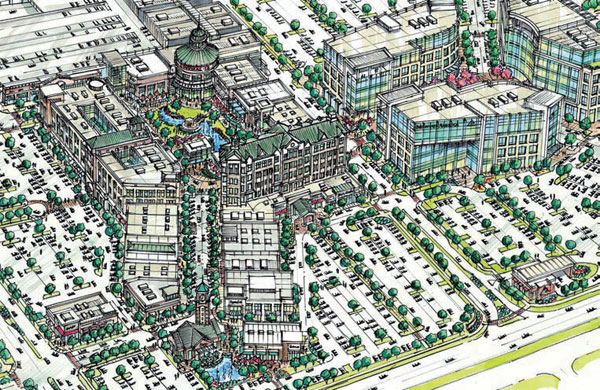By Brice Wallace
Even with hundreds of ideas already flowing in about the future of the Point of the Mountain area, a legislative commission and development partner Envision Utah want more.
Tasked with looking at what to do with about 22,000 undeveloped acres at the Salt Lake-Utah county border, the Point of the Mountain Commission and Envision Utah are seeking opinions about the property’s potential use through a survey available at http://envisionutah.org/ and pointofthemountainfuture.org.
Speaking to the Governor’s Office of Economic Development (GOED) board recently, Robert Grow, Envision Utah’s president and chief executive officer, said about 10,000 people had visited the project website and that 500 people at that point had responded to the survey.
“Lots of public input,” Grow said about the idea-seeking process, which has featured workshops and surveys of the public, stakeholders and technology company employees. “A lot of people are very excited about this and want to be heard.”
“It’s absolutely crucial that we hear as many voices as possible as we move forward with this project,” Christopher M. Conabee, co-chair of the commission, said in a prepared statement. “We are thrilled with the amount of public input we received at the workshops, and look forward to more through this survey. We rely heavily on community members for input and ideas. It’s their home, and we want to help them grow it the way they want.”
The Point of the Mountain area includes the 700-acre prison site in Draper — the prison will move in a few years to a site near Salt Lake City International Airport — and many people are pushing for the area to become a hub for innovative technology companies, augmenting an already tech-heavy area called “Silicon Slopes.” Public input so far has shown strong support for the area to have lots of green space or open space, heavy with trails. Other ideas have ranged from having it be the site of university-level research laboratory to the location of a theme park. Grow said one response suggested a park for medieval jousting.
“We’ve been listening carefully to lots of groups,” Grow told the GOED board, noting that the current phase of the process focuses on “what could it be?” Phase 2, starting in April and running into next winter, will feature scenario development and modeling “as we’re bringing together the big ideas that we’ve heard,” he said. Phase 3, starting next winter, will include a funding strategy, vision development, implementation and a final report.
Grow showed slides indicating that a stakeholder kickoff event had 175 people in attendance and yielded more than 100 comments; nine topic-specific meetings had 130 attendees; a survey of employees at six tech companies prompted 1,076 responses; and public workshops had more than 160 people in attendance.
The two public workshops in mid-February indicated that participants’ top concerns for the area are generating jobs and managing transportation. The area’s biggest challenge is transportation, according to stakeholders. Grow said that by the year 2050, Salt Lake County could have 1.5 million residents and Utah County could have 1.3 million. “A lot of them are going to want to go right through this bottleneck,” he said. “This will become the most challenging transportation issue in the state of Utah.”
As for the area’s potential to be a technology center, Grow said planners want to avoid what has happened in Silicon Valley, which he said “has become a place of the rich and the very poor.” The idea here is to not just to be a concentration of creative innovation but to also have it be the site of manufacturing and other spinoff jobs.
RCL Co. recently ranked the area No. 5 among the nation’s innovation hubs, behind only the Bay Area; Washington, D.C.; Seattle and Boston.
“The ones we’re competing against are larger urban centers — larger, stronger, have more of an urban environment than we do,” Grow said. “That can be a plus or a minus. … We are unique, and we need to think about how did this cluster happen; how are we going to help it grow; is it still fragile; and, if so, to what extent?”
The survey of technology company employees indicated that poor air quality is the top reason that employees might leave the area.
“I should tell you, we’re hearing [that] from the companies,” Grow said. “They’re not going to be willing to fly their flag, long term, in a place with air that does not meet the standards. It’s just that simple. We’re hearing it from the employees, but we’re hearing it from the companies as well.”








